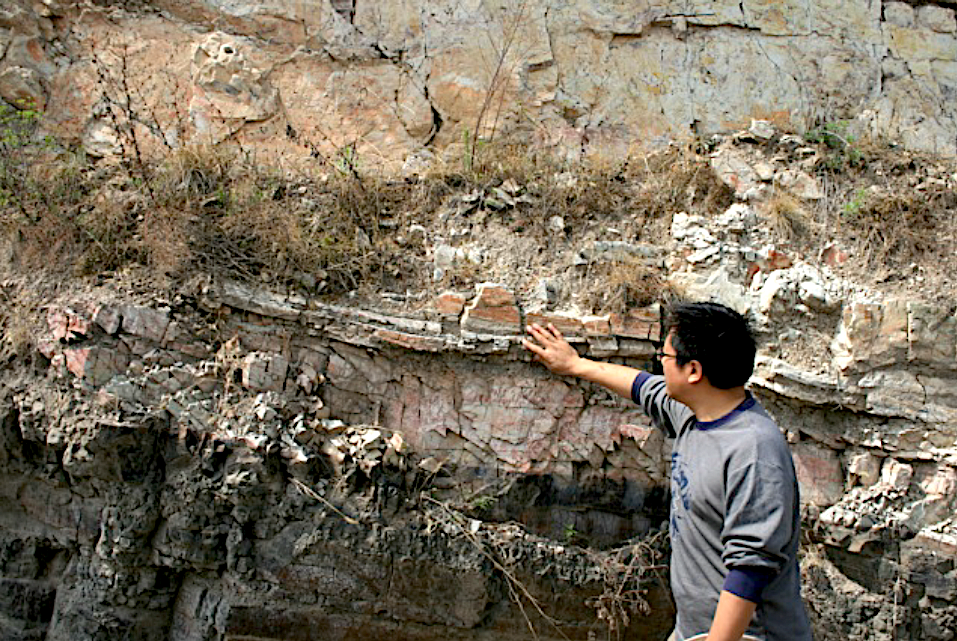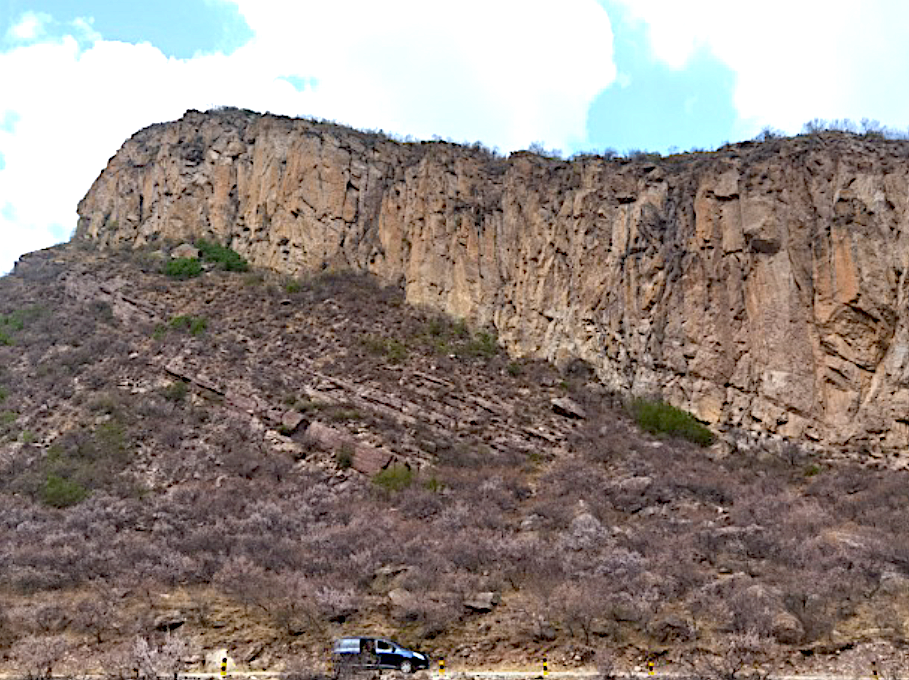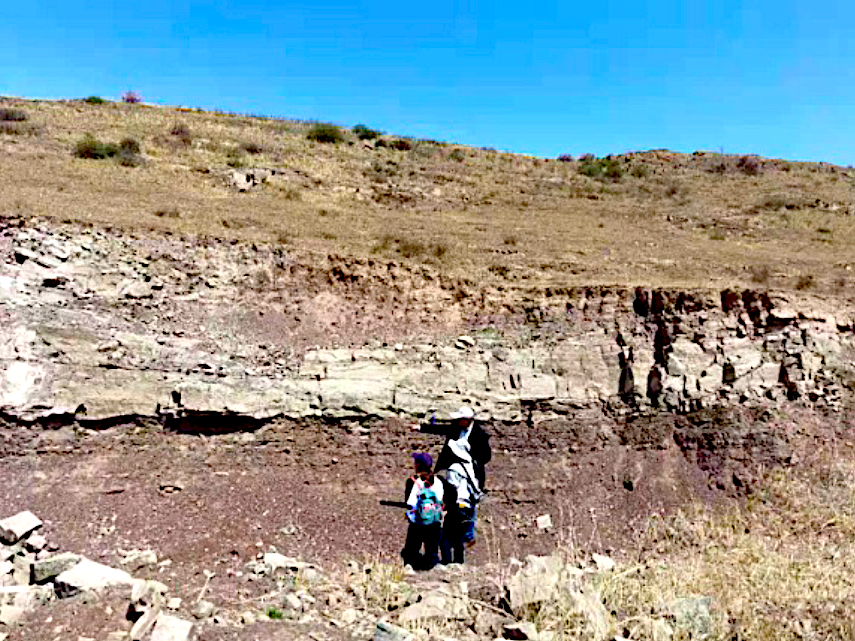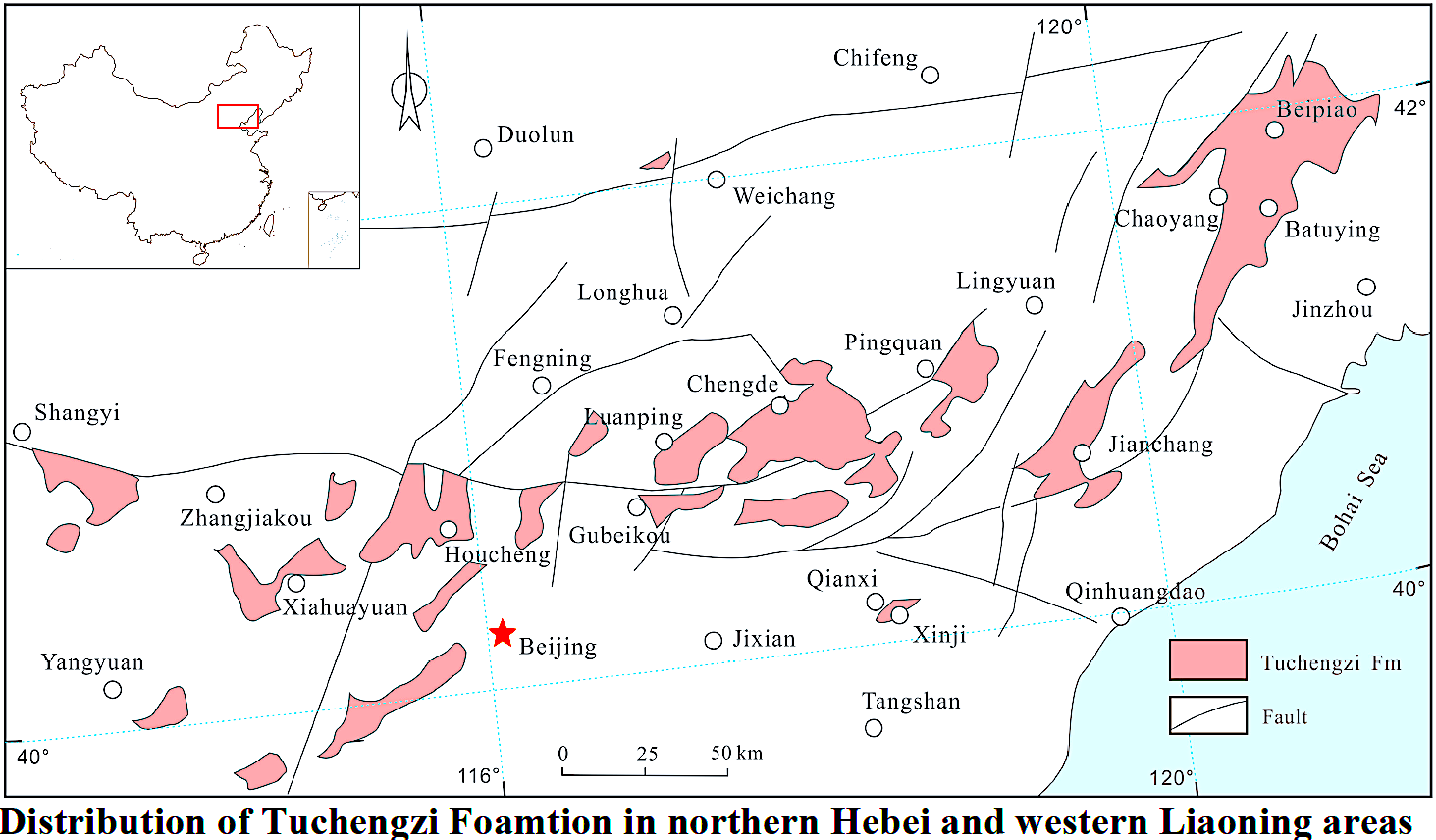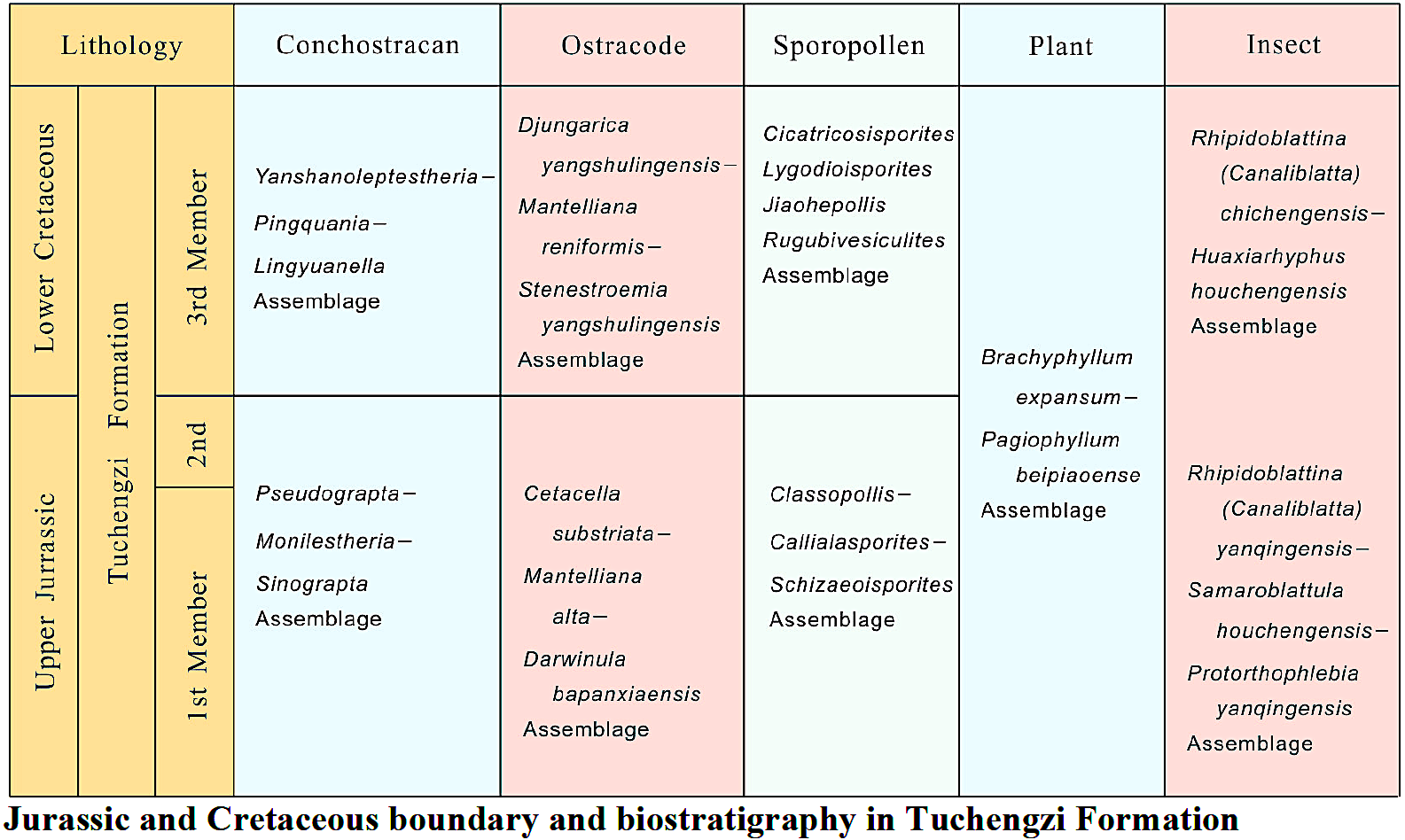Tuchengzi Fm
Type Locality and Naming
N. Hebei-W. Liaoning Basin. The formation was named by Lin Chaoqi as the Tuchengzi Conglomerate Horizon in 1942. The naming section is located in the area of Lanqi East Gully-Xiayoufang Gully of the Tuchengzi Township, Beipiao City, Liaoning Province, with its reference section being situated in the area of Yuantong Temple of the Chicheng County, Hebei Province.
Synonym: It was named as “Houcheng Formation" in the 1:200,000 Geological Mapping Report (1989) by the Hebei Geological Bureau. After the stratigraphic sorting, the “Houcheng Formation" was uniformed as the Tuchengzi Formation in the Liaoning, Hebei and Inner Mongolia (Nei Mongol) regions (1996).
Lithology and Thickness
It is divided into 3 members in ascending order: Member 1 is composed of purple tuffaceous shale, intercalated with a small amount of grey-green siltstone and silty mudstone, yielding Eosestheria and spore-pollen fossils; Member 2 is composed of grey-violet clayey-sandy cemented conglomerate, intercalated with sandstone; and Member 3 is composed of purple and grey-green tuffaceous sandstones, intercalated occasionally with conglomerate and shale, and being possessed of large-scale cross-beddings or platy stratifications. Being known as the “Dengzhanzi Fm” in the Guojiadian-Niuyingzi Basin, this formation is composed largely of a set of limestone-conglomerates, intercalated with a small amount of sandy shale, with a thickness of 352-2008 m. The three members of the formation are developed incompletely in most regions and with varying thickness, with the grey-green sandstone from its upper member being used as building materials.
[Figure: Base of Tuchengzi Formation in Sijiazi section, Yixian of Liaoning Province. Tuff bed indicating 139 Ma age]
[Figure: Middle part of Tuchengzi Formation in Wulahada section, Shangyi of Hebei]
[Figure: Third Member of Tuchengzi Formation in Yangshuling section of Pingquan, Hebei Province]
[Figure: Boundary between Tuchengzi (lower) and Zhangjiakou (upper) formations at Yuantongsi section of Houcheng basin, Hebei]
Relationships and Distribution
Lower contact
In the Hebei Province, its basal part is in a disconformable contact with the underlying Tiaojishan Fm (Lanqi Fm).
Upper contact
Depends on basin. In western Liaoning, it is disconformably overlain by the Yixian Fm.
Regional extent
In the northern part of Hebei Province the particular formation is distributed chiefly in the Gubei Pass of the Miyun County, Shouwangfen region of the Xinglong County, Houcheng region of the Chicheng County, Chengde City, Hushiha of the Fengning County, Tumulu of the Shanji County, the Xinming Village of Guyuan County and the Huapen region of Yanqing County, and is composed largely of purple and variegated sandy conglomerates, sandstones, siltstones and shales, intercalated occasionally with tuffaceous siltstone, rhyolite, andesite and coal seams, with developed cross-beddings, and with a thickness varying in a range from 160 m to 4425 m.
The Tuchengzi Formation occurs in a wide area including Liaoning, Hebei and Inner Mongolia. It is well developed in western Liaoning Province, distributed largely in the Beipiao, Jinling Temple-Yangshan Mts, Fuxin-Yixian and Kezuo-Gujinling basins of different scales. It is also called “Houcheng Fm” in the Hebei Province.
[Figure: Distribution of Tuchengzi Formation in northern Hebei and western Liaoning areas]
GeoJSON
Fossils
Fossils are not rich in this formation, yielding estheria fossils as Pseudograpta orbita, P. sp., Nestoria reticulata, Mesolimnadia jinlingsiensis, M. recta; dinosaur footprints such as Jeholosauripus satoi; vertebrate fossils such as Chaoyoungosaurus liaosiensis, as well as spore and pollen assemblages. In the Yangshu Ridge of Pingquan County the particular formation yields Eosestheria fossils such as Pseudograpta cf. murchisoniae, Yanshanoleptestheria yangshulingensis, Y. minor and Nestoria sp.; Ostracod fossils like Wolburgia polyphema, W. bella, Steneatroemia subcentralis, Mantelliana jingguensis, Djungarica yangshulingensis, Damonella ovata, Eoparacypris pingquanensis and Darwinula yangshulingensis.
[Figure: Jurassic and Cretaceous boundary and biostratigraphy in Tuchengzi Formation]
Age
Depositional setting
The formation belongs to fluvial and lacustrine-facies deposits, including possibly some arroyo deposits and aeolian-dune deposits.
Additional Information

